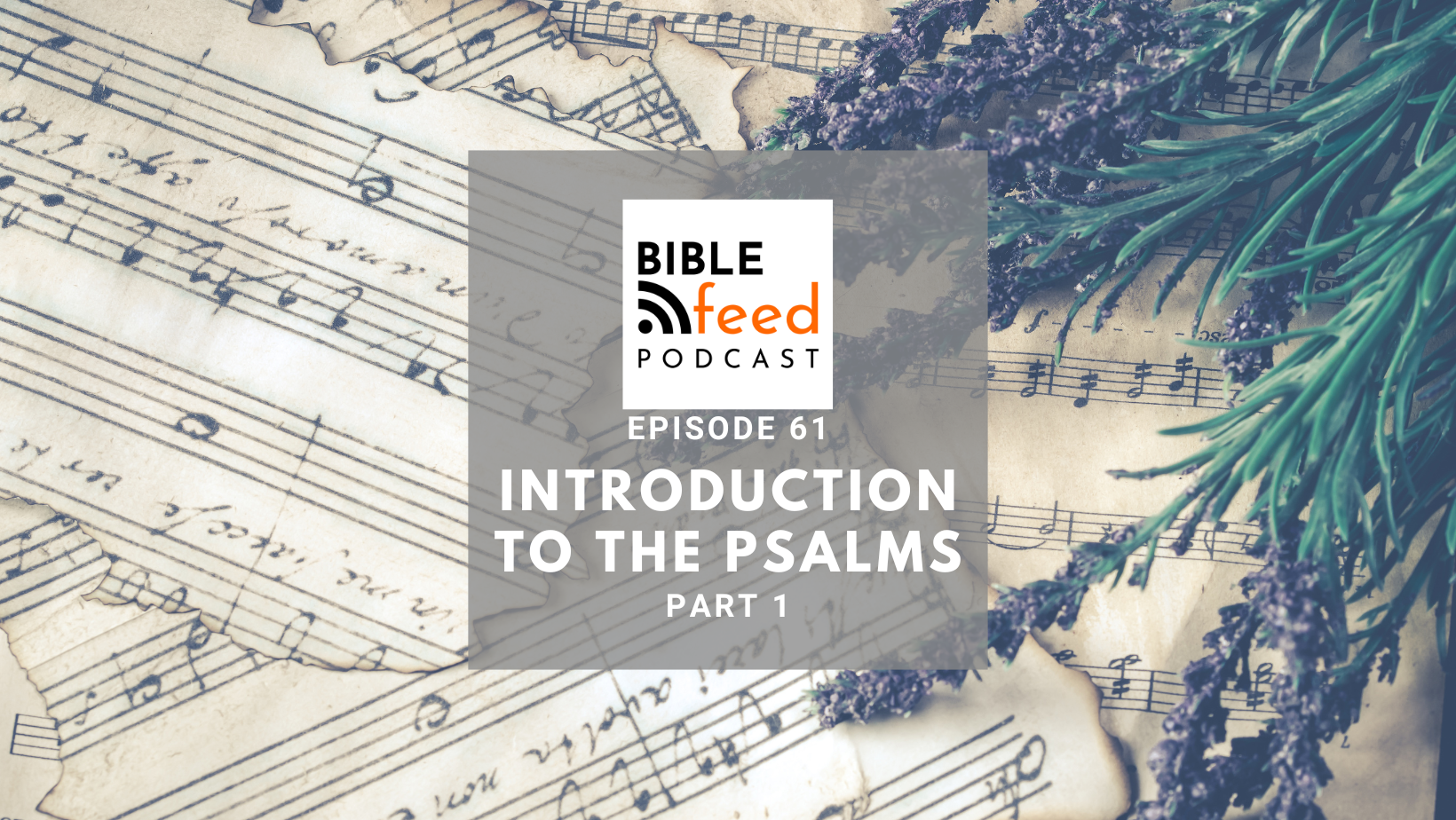Episode 61: Introduction to the Psalms (Part 1)
For the next of our Bible book introductions, Jordan Walton and Dan Weatherall tackle the Psalms. As there are 150 of them we thought they deserved two episodes! So here is part 1, with part 2 to follow in a couple of weeks. Dan and Jordan consider whether the Psalter is just a random collection of prayers and songs or whether there is some structure to it. Having identified a five book structure, they start to delve into the focus of books one and two.
Show Notes
After and brief introduction, Dan and Jordan talk about where to find the book of Psalms (or the Psalter) in the Old Testament (and the different order in the Hebrew Bible). They reflect on the fact that this book spans a huge period of time, from Moses (Psalm 90) to the times of the exile (e.g. Psalm 137:1).
As a collection of different songs and prayers, the Psalms lack an obvious narrative. Jordan talks about how this can sometimes make it hard to know what to get out of reading the Psalms today. Paying attention to the historical background is the first step towards understanding how these ancient songs can help Christians today.
The structure of the Psalms
Dan confirms that this introduction on the Psalter cannot go into detail of all 150 psalms(!) so he and Jordan begin to examine whether there is a structure or pattern within the collection or not. Has this book been assembled with purpose and order, or is it just a random group of Israel’s greatest hits?
Jordan explains how there are some markers throughout the Psalter that identify sections, often called the five books of the Psalms. Psalm 41:13, for example, is the first of these verses that identify a conclusion to a book within the whole Psalter; “Blessed be the LORD, the God of Israel, from everlasting to everlasting! Amen and Amen.” Words like this are repeated at intervals throughout the Psalter, (another example is Psalm 72:19-20), to split the 150 psalms into 5 main sections. Psalms 1 and 2 provide a prologue, whilst the final 5 act as a final doxology to conclude the whole collection.
The introduction to the Psalter
Jordan explains how Psalm 1 sets the scene by providing a picture of the perfect individual who reads the Law of God, meditates on it and uses the Psalms to be like this tree planted by rivers of living water. It’s an invitation to each individual to join in a relationship with God through the help of the Psalms and the rest of the scriptures.
Psalm 2 is then a an invitation to communities and nations. They are invited to “Serve the LORD with fear, and rejoice with trembling. Kiss the Son…” (Psalm 2:11-12). The whole world is now imagined as having an opportunity to come under the rulership of the Messiah, God’s anointed king, and to be in fellowship with God.

Themes throughout Books 1 and 2.
Jordan and Dan continue to trace themes that run through the Psalms within books 1 and 2. They discover historical details of David on the run from Saul, awaiting to be king, his own individual growth, and his complaint, plea and trust in God reflected in some of the lament Psalms.
Within book 2, they identify how this section appears to correlate with David becoming king and now having a responsibility over a large community of people, the nation of Israel. In this way, books 1 and 2 seem to reflect Psalms 1 and 2 with invitations to firstly individuals and also large communities and nations.
Next episode
This episode concludes halfway through Dan’s conversation with Jordan, just before they dive into the third book of the Psalms. The next episode continues the conversation.
Jordan’s work on the Psalms can be seen in more detail on the Walsall Christadelphians YouTube channel, where there are 63 videos of conversations about many individual Psalms and themes running through the book.







